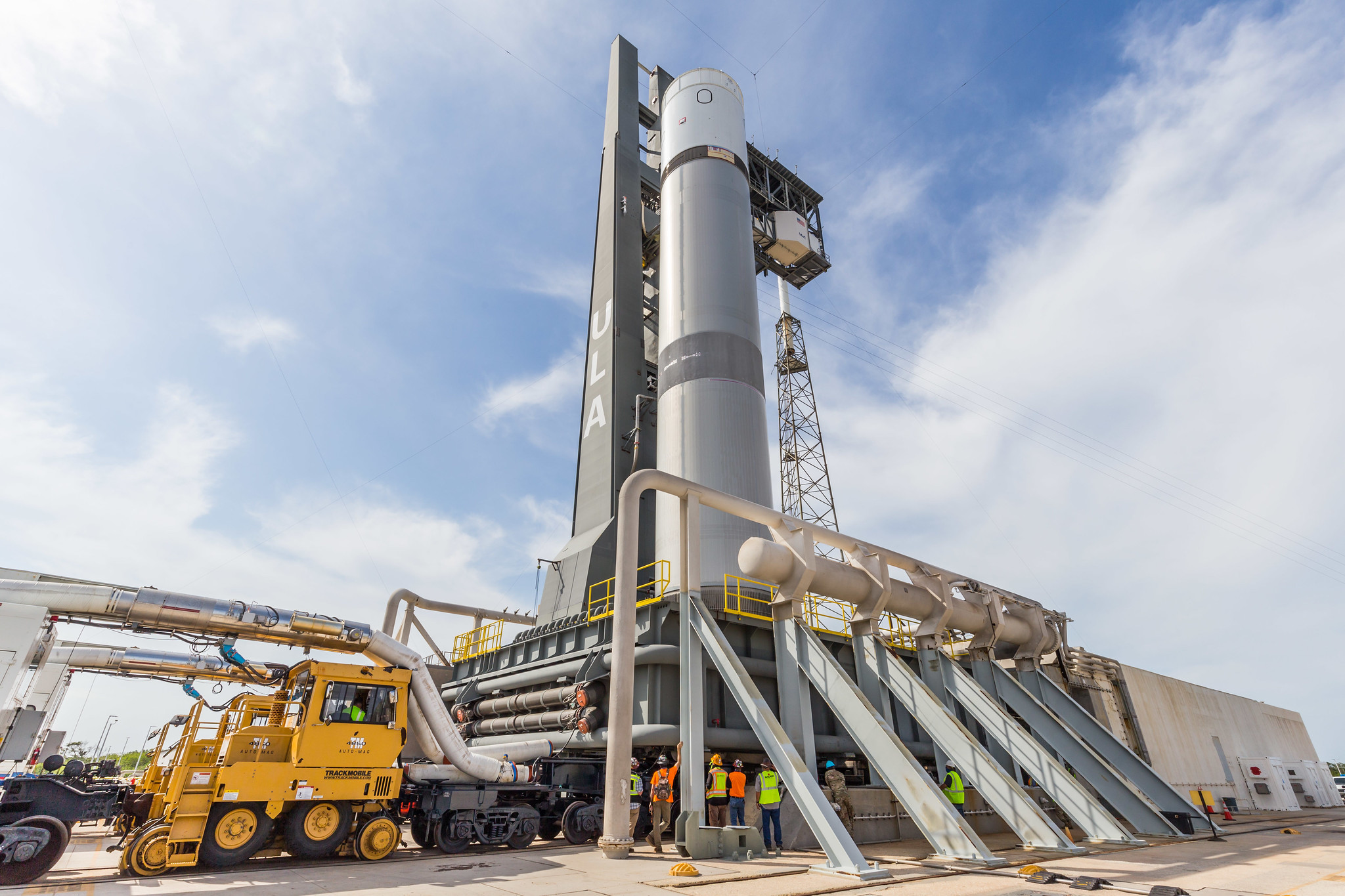The mission known as USSF-51 was switched from Vulcan to Atlas 5 at ULA’s request
WASHINGTON — What would have been the first national security mission for United Launch Alliance’s Vulcan Centaur rocket will be flown by Atlas 5, the company confirmed May 19.
That mission, known as USSF-51, was awarded to ULA in August 2020 and is scheduled to launch in late 2022. The company had bid its newly developed Vulcan to fly that mission but the vehicle is not going to be ready on time. As a result, the Space Force agreed to allow ULA to launch USSF-51 on the company’s legacy vehicle the Atlas 5.
ULA on August 7 received a $337 million contract to launch USSF-51 and USSF-106, scheduled for late 2022 and mid 2023, respectively. The Space Force on that day announced that ULA and SpaceX were selected to launch military and intelligence agency satellites in a five-year deal known as National Security Space Launch Phase 2.
ULA’s Vulcan won 60% of the Phase 2 missions, and SpaceX’s Falcon 9 and Falcon Heavy won 40%.
The Phase 2 contract allows providers to offer a secondary launch vehicle for missions awarded in fiscal years 2020 and 2021. ULA exercised that option for USSF-51, a classified mission for the National Reconnaissance Office.
Col. Robert Bongiovi, director of the Space and Missile Systems Center’s launch enterprise, said in a statement to SpaceNews that “SMC worked with United Launch Alliance to change the USSF-51 launch vehicle configuration, at ULA’s request, on the Phase 2 contract from a Vulcan Centaur to an Atlas 5 to mitigate schedule risk associated with Vulcan Centaur non-recurring design validation.”
ULA’s CEO Tory Bruno told reporters last year the company was planning to offer the Atlas 5 as an alternative vehicle in case there were delays with Vulcan. He noted that some of the Phase 2 contracts are for missions that Atlas 5 has flown before.
Switching vehicles financially penalizes ULA. According to the company, the Atlas 5 is more expensive than Vulcan. Phase 2 provisions allow ULA to change vehicles but at no cost penalty to the government.
Bruno said in December that Vulcan’s first flight would happen in 2021 and the second flight in 2022. The first one is a lunar lander mission for Astrobotic, a commercial company under contract to NASA to deliver payloads to the moon. The other is a Sierra Nevada Dream Chaser cargo spacecraft mission to the International Space Station.
Any delays in these missions automatically sets back Vulcan’s certification for national security launch. To certify a new vehicle, the Space Force requires successful completion of three flights. Vulcan will be able to get certified with only two flights because ULA agreed to give the government full access to vehicle development and engineering data.
Vulcan’s booster engine is another concern. Before Vulcan can launch any missions, it needs a BE-4 engine for its first stage.
ULA and Blue Origin in 2014 signed a deal to jointly fund development of the BE-4 rocket engine. ULA in 2015 announced it would build Vulcan as its next-generation rocket to replace the Atlas 5 and the Delta 4. In 2018 ULA awarded Blue Origin a contract for the production of BE-4 engines for Vulcan. Blue Origin in 2020 delivered pathfinder engines for ground tests but has yet to provide a flight-qualified engine for Vulcan’s first flight. A spokeswoman for Blue Origin said May 20 the company could not comment on the status of the BE-4.
In a statement May 19, ULA declined to provide specific reasons why Vulcan’s national security certification will be delayed and suggested that customer payloads are the issue. “Vulcan Centaur will be ready when our customers are ready for launch,” the company said.
“ULA proposed changing USSF-51 from a Vulcan Centaur to an Atlas by submitting a formal letter of request to the U.S. Space Force, and they agreed with the merits of these benefits,” said ULA. “This change allows for ULA’s first two Vulcan Centaur missions, which are for commercial customers, to launch when they are ready and not impact the Space Force’s mission.”
Bongiovi said the Space Force launch enterprise has “assessed the launch vehicle configuration change to an Atlas 5 launch vehicle as low risk and a viable solution. The first NSSL Vulcan mission remains scheduled for early 2023.”
The Space Force and ULA are faced with a closing window of time to get Vulcan certified for national security launch due to a legislative mandate to end the Defense Department’s reliance on the Atlas 5 rocket, which has the Russian RD-180 as its main engine. By law, DoD will not be allowed to award contracts for Atlas 5 launches after Dec. 31, 2022.
